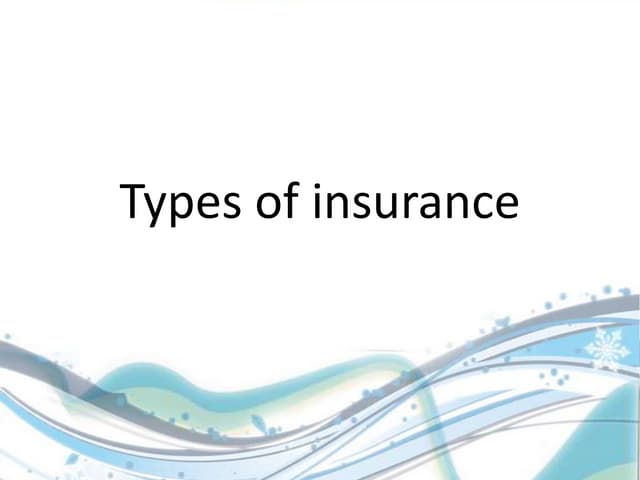What are the key benefits of insurance? What are premiums?
# **Understanding Insurance: Key Benefits and the Role of Premiums**
Insurance plays a vital role in financial planning, providing protection against unexpected risks and fostering peace of mind. Whether it’s safeguarding your health, life, property, or business, insurance serves as a safety net when uncertainties strike. In this blog, we’ll explore the **key benefits of insurance** and break down an essential concept: **premiums**.
---
## **What Are the Key Benefits of Insurance?**
Insurance offers numerous advantages, making it a cornerstone of financial security. Here are the most significant benefits:
### **1. Financial Protection**
Life is unpredictable, and unexpected events like illnesses, accidents, or natural disasters can result in substantial financial burdens. Insurance mitigates these risks by covering the associated costs, ensuring you don’t have to drain your savings or incur debt.
- **Example:** Health insurance covers expensive medical treatments, while auto insurance pays for repairs and liability after an accident.
---
### **2. Peace of Mind**
Knowing you are financially protected allows you to focus on your goals without constant worry about “what if” scenarios. Insurance brings emotional security, reducing stress about potential future losses.
- **Example:** Life insurance ensures that your family’s needs will be met even if you are no longer there to provide for them.
---
### **3. Legal Compliance**
Certain types of insurance are mandatory by law. Compliance with these requirements not only protects you but also safeguards others who may be impacted by your actions.
- **Example:** Auto insurance is required in most countries to cover liability for accidents. Similarly, businesses may need workers’ compensation insurance to protect employees.
---
### **4. Risk Management and Sharing**
Insurance operates on the principle of risk pooling. By spreading risks across many policyholders, insurers can compensate those who experience losses without overwhelming financial strain on any one person.
- **Example:** When a natural disaster damages homes, homeowners’ insurance allows those affected to recover financially while others in the pool continue contributing premiums.
---
### **5. Encouragement to Save**
Certain types of insurance, like life insurance, combine protection with savings or investment benefits. These policies accumulate cash value over time, which can be used for future needs like retirement or education.
- **Example:** Whole life insurance offers a death benefit along with a savings component that grows over time.
---
### **6. Coverage for Businesses**
Insurance is crucial for businesses to protect against risks such as property damage, liability claims, and employee injuries. It ensures business continuity even in adverse situations.
- **Example:** Cyber insurance shields businesses from financial losses caused by data breaches or cyberattacks.
---
### **7. Tax Benefits**
In many countries, insurance premiums and payouts can provide tax advantages, making it an attractive financial tool.
- **Example:** Life insurance premiums may qualify for tax deductions, and the death benefit is often tax-free.
---
## **What Are Premiums in Insurance?**
At the heart of any insurance policy is the concept of **premiums**—the price you pay for coverage. Understanding premiums is crucial to making informed decisions about your insurance needs.
---
### **1. Definition of Premiums**
A premium is the amount of money a policyholder pays to an insurance company in exchange for coverage. Premiums can be paid periodically (monthly, quarterly, or annually) or as a lump sum, depending on the policy terms.
- **Example:** If you pay $100 per month for car insurance, that amount is your premium.
---
### **2. Factors Influencing Premiums**
Insurance premiums are not one-size-fits-all. They are determined by several factors that assess the level of risk you represent to the insurer:
- **Type of Insurance:** Different policies have different cost structures (e.g., health insurance premiums are based on medical history, while auto insurance considers driving records).
- **Risk Profile:** Age, health status, occupation, lifestyle, and geographic location affect premiums.
- **Coverage Amount:** Higher coverage limits and broader policies result in higher premiums.
- **Deductibles:** Policies with higher deductibles (the amount you pay before the insurer covers the rest) often have lower premiums.
- **Claims History:** A history of frequent claims may increase your premiums.
---
### **3. Why Are Premiums Necessary?**
Premiums fund the insurance pool, enabling insurers to pay claims when policyholders experience losses. By collecting premiums from a large group of people, insurers ensure they have the financial resources to cover risks.
- **Example:** In health insurance, premiums paid by all members of the pool help fund medical expenses for those who require treatments.
---
### **4. How Are Premiums Paid?**
Premiums can be structured to suit the policyholder’s preferences:
- **Regular Payments:** Monthly, quarterly, or annual payments.
- **One-Time Payment:** Single-premium policies for long-term coverage, such as specific life insurance plans.
---
### **5. Can Premiums Change Over Time?**
Yes, premiums can fluctuate based on:
- Changes in risk factors (e.g., health deterioration, aging).
- Market conditions or regulatory changes.
- Adjustments in coverage or deductible levels.
---
## **Conclusion**
Insurance is a cornerstone of financial stability, offering protection, peace of mind, and risk management. By understanding the role of premiums and their importance in the insurance process, you can make better decisions about the coverage that suits your needs and budget.
Insurance is not just about managing risk; it’s about building a secure future for yourself and your loved ones. Whether you’re insuring your health, life, car, or home, having the right coverage ensures you’re prepared for life’s uncertainties while safeguarding your financial well-being.








